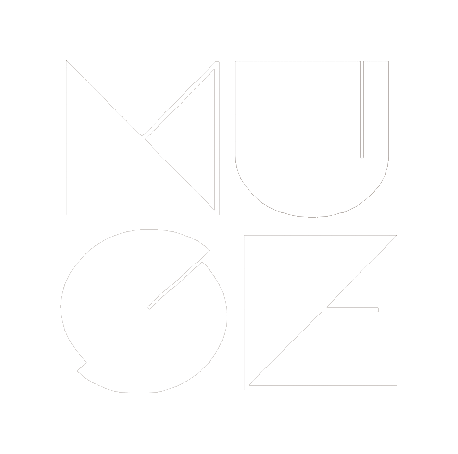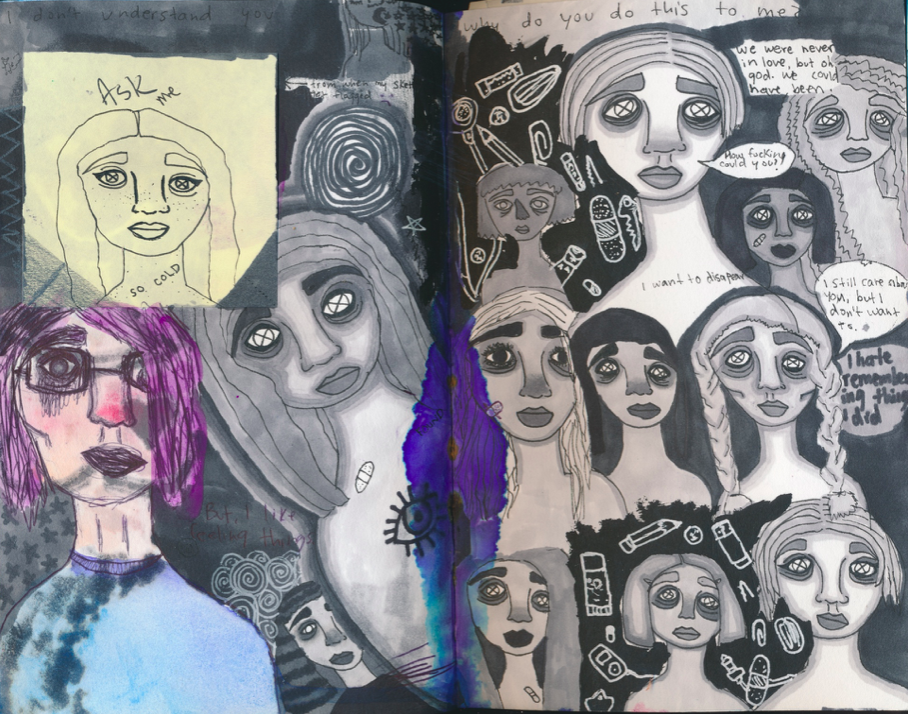My Queer Art Journey
It was around the same time I realized I was queer that my art style began to develop. I was lucky enough to go to Etobicoke School of the Arts (ESA), which is an art school in Toronto, Ontario. After a lifetime of feeling different and out of place, I felt like I belonged in the visual arts program at ESA. I was in an environment where queerness was common enough that it felt unremarkable (at least to me). This allowed me to be completely open about my queer identity without fearing any kind of social consequences, a luxury many queer people don’t have.
As I began to figure out my art style, I also had my first queer romance. They were scene/emo and after meeting them I began layering on the eyeliner and wearing all black. Tumblr era grunge aesthetic style drawings and quotes are littered throughout my first high school sketchbooks.
In my early sketchbooks, the story of this romance is told through notes from them and drawings we made together.
Then I had my first queer heartbreak, which resulted in lots of dark, emotional drawings. But, my strong feelings for them motivated my self-expression, as I was making more art than ever before. Although I wasn’t making art with the goal of improvement, that’s what ended up happening. As I poured my emotions onto the pages of my sketchbook, I began to develop a unique personal style.
Once I recovered from this heartbreak, I felt like a weight had been lifted off my shoulders, and this was reflected in my work. My short-lived grunge phase was over, and I began to discover my love for pastel colours and children’s book illustrations. I made drawings full of colour with themes of innocence and childhood.
Although, there were still a few mentions of them in my sketchbooks…
After high school, I was thrown into a world where queerness wasn’t the norm, and I wanted to fit in with my new university friends. I only dated men during my first few years of university, and my art reflected this.
By my fourth year, my queerness became impossible to deny. This realization was uncomfortable because many of the friends I had become so close to over the past 3 years had no idea I was queer, and I wasn’t sure how to casually bring it up. I had never meant to keep my identity a secret, but it somehow ended up that way. I started dropping hints, and this allowed me to slowly start being more open about my sexuality. I began to embrace my queerness in my art and talk about it with my friends and family. I’ve always felt like my art is an extension of myself, and being the truest (and queerest) version of myself makes my art feels more genuine.



























